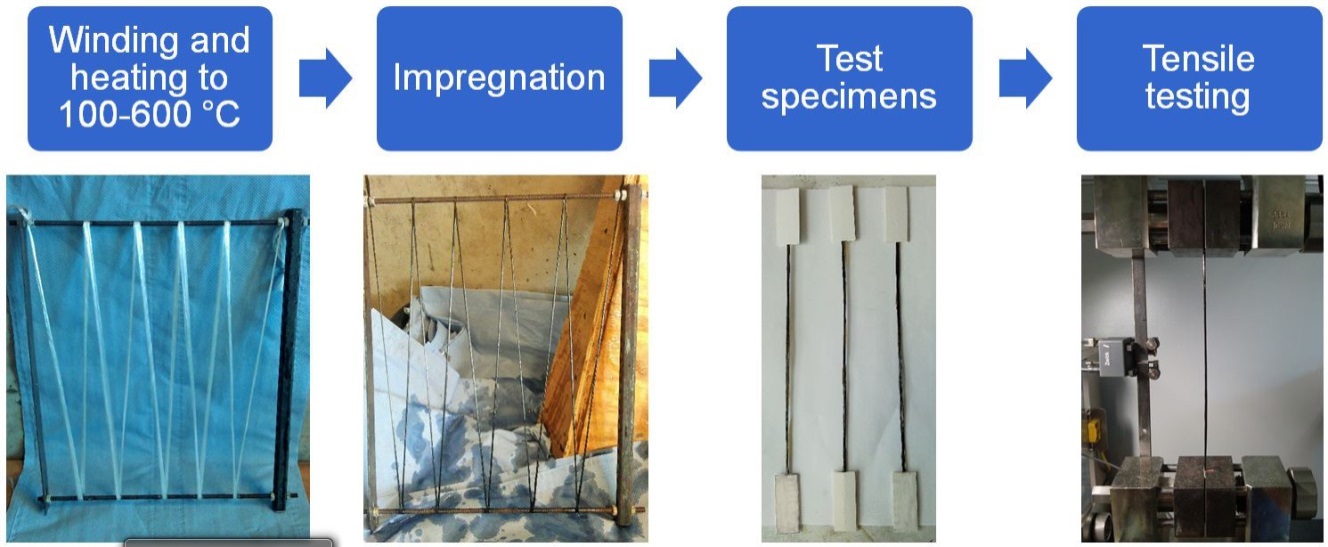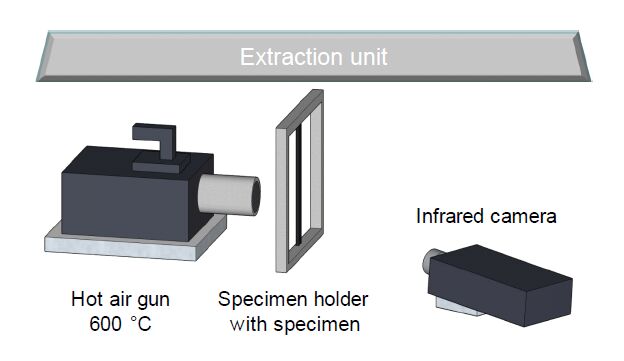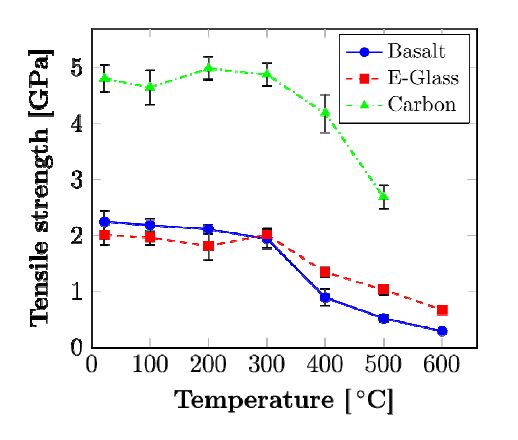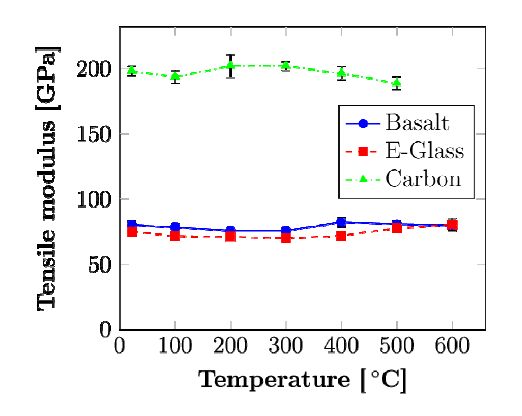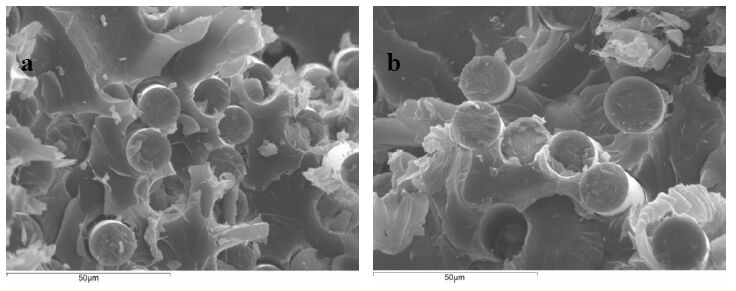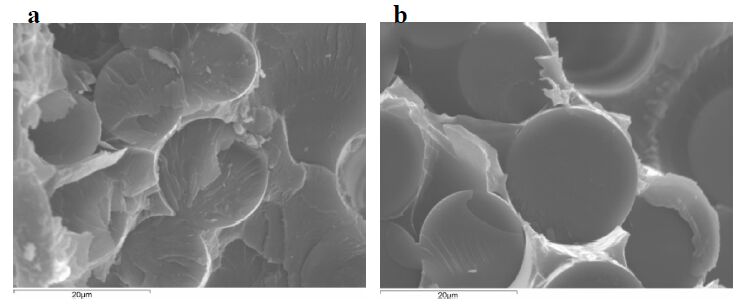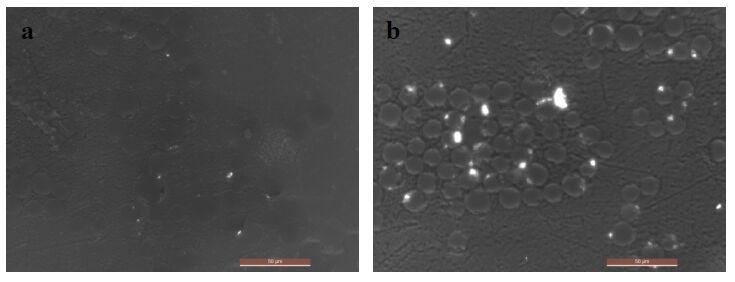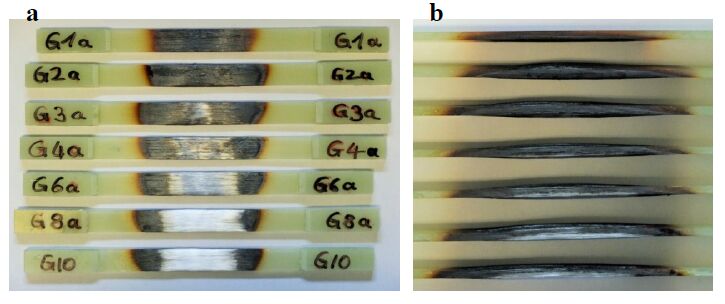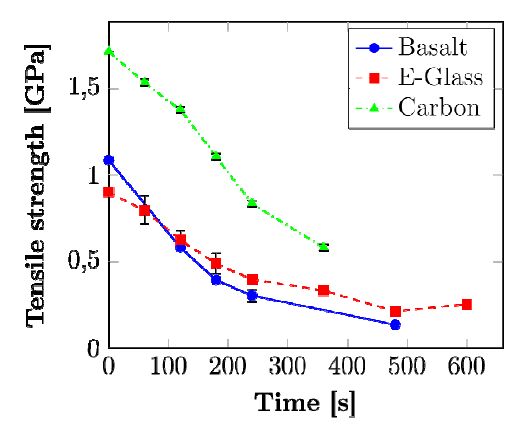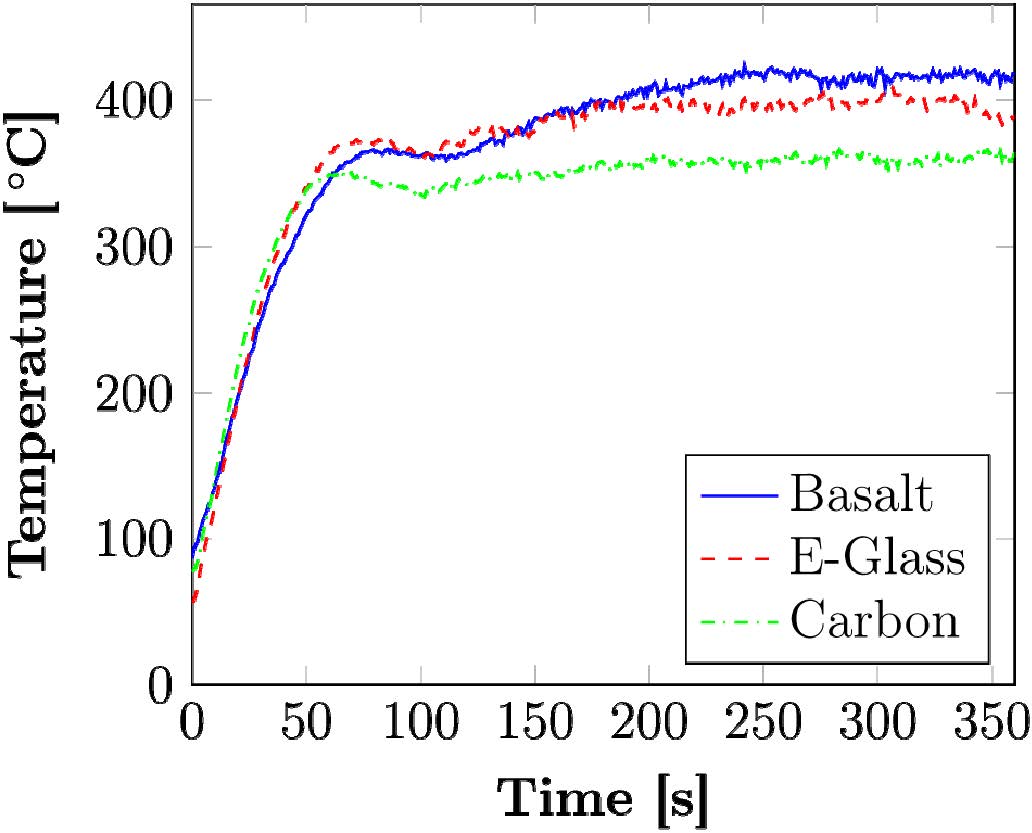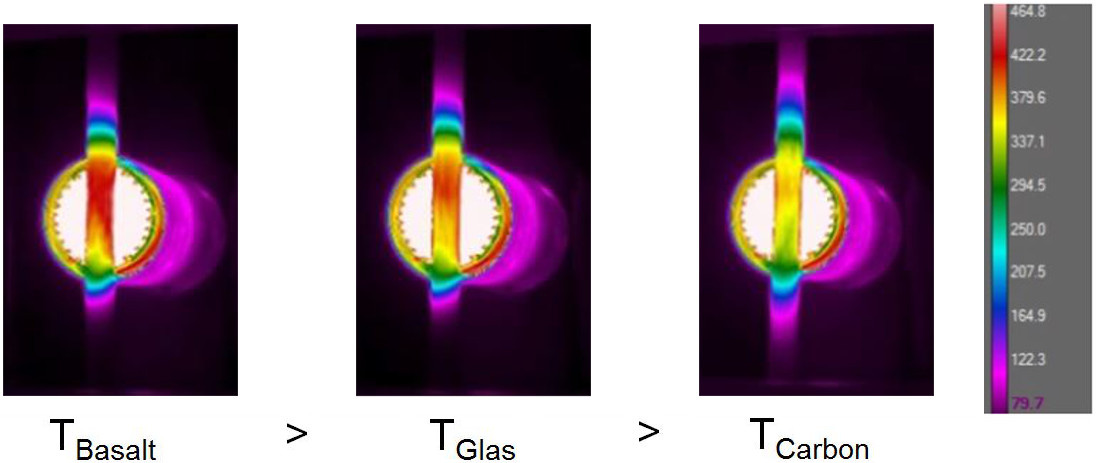| 1.
|
R. Manikandan, S. Mohamed Abbas, S. Sathish, J. Irfan Ahamed, A. Thanveer Ahamed, M.K. Javeed Miandad, S.Z. Thovheed,
Experimental analysis of basalt fiber reinforced egg shell/water hyacinth loaded epoxy composites,
2020,
22147853,
10.1016/j.matpr.2020.08.557
|
|
| 2.
|
Ahmed Elmahdy, Patricia Verleysen,
Comparison between the mechanical behavior of woven basalt and glass epoxy composites at high strain rates,
2021,
34,
22147853,
171,
10.1016/j.matpr.2020.02.284
|
|
| 3.
|
Jun Xiao, Ming Chen, Minjie Huang, Mingyu Wang, Juan Huang,
Systematic evaluation of PDA/PAM/MAH-modified basalt fibre as biofilm carrier for wastewater treatment,
2020,
0959-3330,
1,
10.1080/09593330.2020.1829085
|
|
| 4.
|
Ahmed Elmahdy, Patricia Verleysen,
Mechanical behavior of basalt and glass textile composites at high strain rates: A comparison,
2020,
81,
01429418,
106224,
10.1016/j.polymertesting.2019.106224
|
|
| 5.
|
Stanisław Kuciel, Paulina Romańska,
Hybrid Composites of Polylactide with Basalt and Carbon Fibers and Their Thermal Treatment,
2018,
12,
1996-1944,
95,
10.3390/ma12010095
|
|
| 6.
|
Sergey I. Gutnikov, Evgeniya S. Zhukovskaya, Sergey S. Popov, Bogdan I. Lazoryak,
Correlation of the chemical composition, structure and mechanical properties of basalt continuous fibers,
2019,
6,
2372-0484,
806,
10.3934/matersci.2019.5.806
|
|
| 7.
|
Josef Vosáhlo, Martina Ryvolová,
Basalt Reinforced Plastic - Development and Modeling of Part,
2020,
994,
1662-9752,
115,
10.4028/www.scientific.net/MSF.994.115
|
|
| 8.
|
Zdeněk Chlup, Martin Černý, Adam Strachota, Hynek Hadraba, Petr Kácha, Martina Halasová,
Effect of the exposition temperature on the behaviour of partially pyrolysed hybrid basalt fibre composites,
2018,
147,
13598368,
122,
10.1016/j.compositesb.2018.04.021
|
|
| 9.
|
Muhammad Yasir, Norlaili Amir, Faiz Ahmad, Sami Ullah, Maude Jimenez,
Synergistic effect of basalt fiber on the thermal properties of intumescent fire retardant coating,
2019,
16,
22147853,
2030,
10.1016/j.matpr.2019.06.088
|
|
| 10.
|
Nick Wolter, Vinicius Carrillo Beber, Anna Sandinge, Per Blomqvist, Frederik Goethals, Marc Van Hove, Elena Jubete, Bernd Mayer, Katharina Koschek,
Carbon, Glass and Basalt Fiber Reinforced Polybenzoxazine: The Effects of Fiber Reinforcement on Mechanical, Fire, Smoke and Toxicity Properties,
2020,
12,
2073-4360,
2379,
10.3390/polym12102379
|
|
| 11.
|
Martin Cerny,
POTENTIAL OF GLASS, BASALT OR CARBON FIBRES FOR REINFORCEMENT OF PARTIALLY PYROLYSED COMPOSITES WITH IMPROVED TEMPERATURE AND FIRE RESISTANCE,
2019,
1804-5847,
115,
10.13168/cs.2019.0056
|
|
| 12.
|
Guijun Yang, Mira Park, Soo-Jin Park,
Recent progresses of fabrication and characterization of fibers-reinforced composites: A review,
2019,
14,
24522139,
34,
10.1016/j.coco.2019.05.004
|
|
| 13.
|
Zdeněk Chlup, Martin Černý, Petr Kácha, Hynek Hadraba, Adam Strachota,
Fracture resistance of partially pyrolysed polysiloxane preceramic polymer matrix composites reinforced by unidirectional basalt fibres,
2020,
40,
09552219,
4879,
10.1016/j.jeurceramsoc.2020.01.047
|
|
| 14.
|
Fabrizio Sarasini, Jacopo Tirillò, Maria Carolina Seghini,
Influence of thermal conditioning on tensile behaviour of single basalt fibres,
2018,
132,
13598368,
77,
10.1016/j.compositesb.2017.08.014
|
|
| 15.
|
S. Mahesh Babu, M. Venkateswara Rao,
Effect of basalt powder on mechanical properties and dynamic mechanical thermal analysis of hybrid epoxy composites reinforced with glass fiber,
2018,
6,
2224-3682,
311,
10.1080/22243682.2018.1470030
|
|
| 16.
|
M.P. Lebedev, O.V. Startsev, A.K. Kychkin,
The effects of aggressive environments on the mechanical properties of basalt plastics,
2020,
6,
24058440,
e03481,
10.1016/j.heliyon.2020.e03481
|
|
| 17.
|
Azadeh Mirabedini, Andrew Ang, Mostafa Nikzad, Bronwyn Fox, Kin‐Tak Lau, Nishar Hameed,
Evolving Strategies for Producing Multiscale Graphene‐Enhanced Fiber‐Reinforced Polymer Composites for Smart Structural Applications,
2020,
7,
2198-3844,
1903501,
10.1002/advs.201903501
|
|
| 18.
|
George Karalis, Kyriaki Tsirka, Lazaros Tzounis, Christos Mytafides, Lampros Koutsotolis, Alkiviadis S. Paipetis,
Epoxy/Glass Fiber Nanostructured p- and n-Type Thermoelectric Enabled Model Composite Interphases,
2020,
10,
2076-3417,
5352,
10.3390/app10155352
|
|
| 19.
|
Jeevi G, Nalini Ranganathan, Abdul Kader M,
Studies on mechanical and fracture properties of basalt/
E‐glass
fiber reinforced vinyl ester hybrid composites
,
2022,
43,
0272-8397,
3609,
10.1002/pc.26641
|
|
| 20.
|
Dimitrios Gaitanelis, Chris Worrall, Mihalis Kazilas,
Detecting, characterising and assessing PEEK’s and CF-PEEK’s thermal degradation in rapid high-temperature processing,
2022,
204,
01413910,
110096,
10.1016/j.polymdegradstab.2022.110096
|
|
| 21.
|
Sikiru Oluwarotimi Ismail, Emmanuel Akpan, Hom N. Dhakal,
Review on natural plant fibres and their hybrid composites for structural applications: Recent trends and future perspectives,
2022,
9,
26666820,
100322,
10.1016/j.jcomc.2022.100322
|
|
| 22.
|
Pascal Mindermann, Marta Gil Pérez, Jan Knippers, Götz T. Gresser,
Investigation of the Fabrication Suitability, Structural Performance, and Sustainability of Natural Fibers in Coreless Filament Winding,
2022,
15,
1996-1944,
3260,
10.3390/ma15093260
|
|
| 23.
|
Yesudhasan Thooyavan, Lakshmi Annamali Kumaraswamidhas, Robinson Dhas Edwin Raj, Joseph Selvi Binoj, Bright Brailson Mansingh,
Effect of combined micro and nano silicon carbide particles addition on mechanical, wear and moisture absorption features of basalt bidirectional mat/vinyl ester composites,
2022,
43,
0272-8397,
2574,
10.1002/pc.26557
|
|
| 24.
|
Satheeskumar Navaratnam, Kajanan Selvaranjan, Darshana Jayasooriya, Pathmanathan Rajeev, Jay Sanjayan,
Applications of natural and synthetic fiber reinforced polymer in infrastructure: A suitability assessment,
2023,
66,
23527102,
105835,
10.1016/j.jobe.2023.105835
|
|
| 25.
|
S Ilangovan, S Senthil Kumaran, K Naresh,
Effect of nanoparticles loading on free vibration response of epoxy and filament winding basalt/epoxy and E-glass/epoxy composite tubes: experimental, analytical and numerical investigations,
2020,
7,
2053-1591,
025007,
10.1088/2053-1591/ab6e36
|
|
| 26.
|
G. R. Reddy,
2023,
Chapter 27,
978-981-19-8978-0,
317,
10.1007/978-981-19-8979-7_27
|
|
| 27.
|
S. Vijayabhaskar, T. Rajmohan, Umar Nirmal, Vemuri Subramanya Somnath Sarma,
2022,
Chapter 15,
978-981-16-8898-0,
255,
10.1007/978-981-16-8899-7_15
|
|
| 28.
|
O. V. Startsev, M. P. Lebedev, A. K. Kychkin,
Aging of Basalt Plastics in Open Climatic Conditions,
2022,
15,
1995-4212,
101,
10.1134/S1995421222010191
|
|
| 29.
|
Yuta Tobata, Kimiyoshi Naito, Jonathon Tanks,
Direct measurement and verification of cohesive zone model parameters for basalt/
PP
rods using the transverse tensile test and virtual double cantilever beam test
,
2023,
44,
0272-8397,
954,
10.1002/pc.27145
|
|
| 30.
|
Ting Li, Hong Zhu, Jiahui Shen, Thomas Keller,
Thermophysical and thermomechanical properties of basalt-phenolic FRP rebars under high temperature,
2022,
342,
09500618,
127983,
10.1016/j.conbuildmat.2022.127983
|
|
| 31.
|
Abhinay Singh Rajawat, Sanjeev Singh, Brijesh Gangil, Lalit Ranakoti, Shubham Sharma, Muhammad Rizal Muhammad Asyraf, Muhammad Rizal Razman,
Effect of Marble Dust on the Mechanical, Morphological, and Wear Performance of Basalt Fibre-Reinforced Epoxy Composites for Structural Applications,
2022,
14,
2073-4360,
1325,
10.3390/polym14071325
|
|
| 32.
|
Mariana Pimenta Alves, Waseem Gul, Carlos Alberto Cimini Junior, Sung Kyu Ha,
A Review on Industrial Perspectives and Challenges on Material, Manufacturing, Design and Development of Compressed Hydrogen Storage Tanks for the Transportation Sector,
2022,
15,
1996-1073,
5152,
10.3390/en15145152
|
|
| 33.
|
F. Di Franco, V. Fiore, R. Miranda, D. Badagliacco, M. Santamaria, A. Valenza,
Influence of anodizing surface treatment on the aging behavior in salt-fog environment of aluminum alloy 5083 to fiber reinforced composites adhesive joints,
2023,
99,
0021-8464,
277,
10.1080/00218464.2021.2011240
|
|
| 34.
|
Y. Thooyavan, L.A. Kumaraswamidhas, R. Edwin Raj, J.S. Binoj, B. Brailson Mansingh,
Failure analysis of basalt bidirectional mat reinforced micro/nano Sic particle filled vinyl ester polymer composites,
2022,
136,
13506307,
106227,
10.1016/j.engfailanal.2022.106227
|
|
| 35.
|
Ying Li, Shiyuan Sun, Yi Zhou, Xufan Xu, Jianchao Zhan,
Influence of Air Plasma Modification Power on Surface Properties of Basalt Fibers and Basalt/Poly(butylene succinate) Adhesion,
2023,
01694332,
157416,
10.1016/j.apsusc.2023.157416
|
|
| 36.
|
Yu. M. Evtushenko, Yu. A. Grigorev, S. A. Levanov,
Composite Materials Based on Basalt. Part 1. Application of Basalts in Composite Materials,
2023,
16,
1995-4212,
401,
10.1134/S1995421223020089
|
|
| 37.
|
Michael Kucher, Philipp Johst, Miguel Lizaranzu, Francisco Lahuerta, Robert Böhm,
A Micromechanical Modeling Approach for the Estimation of the Weathering-Induced Degradation of Wind Turbine Blades,
2023,
5,
2524-8146,
10.1007/s42824-023-00088-4
|
|
| 38.
|
J. Jensin Joshua, Dalbir Singh, Y. Murali Krishna, P. Sivaprakasam, D. Raja Joseph, P. S. Venkatanarayanan, R. Thanigaivelan,
Estimation of Impact Strength of Kevlar/Basalt and Kevlar/Glass Interwoven Composite Laminate after High-Velocity Bullet Impact,
2023,
2023,
1687-8442,
1,
10.1155/2023/8933844
|
|
| 39.
|
Khristina Maksudovna Vafaeva, Manoj Dhyani, Puja Acharya, Khushbu Parik, Sukanya Ledalla, P.K. Prabhakar,
Glass-basalt-plastic materials for construction in temperate and Arctic climatic regions,
2024,
86,
2117-4458,
01111,
10.1051/bioconf/20248601111
|
|
| 40.
|
Pengliang Yang, Theofanis Krevaikas,
Experimental and analytical investigation of the tensile mechanism of textile-reinforced mortar (TRM) composites and fabric grids in elevated temperatures,
2024,
431,
09500618,
136495,
10.1016/j.conbuildmat.2024.136495
|
|
| 41.
|
Stanisław Kuciel, Karolina E. Mazur, Mariola Robakowska, Dominik Paukszta,
Mechanical, Thermal and Performance Evaluation of Hybrid Basalt/Carbon Fibers Reinforced Bio-Based Polyethylene Terephthalate (BioPet) Composites,
2024,
2288-6206,
10.1007/s40684-024-00616-w
|
|
| 42.
|
Ting Li, Tie Liu, Chao Jin, Jinqiao Huang,
Application of Phenolic-based BFRP Rebars Adapted to High Temperature in Beam Strengthened by NSM Technique,
2024,
1016-8664,
1,
10.1080/10168664.2024.2365822
|
|
| 43.
|
Gilles Vandereecken, Christian Toderascu, Michael El Kadi, Danny Van Hemelrijck, Tine Tysmans,
Influence of coating and reinforcement volume fraction on woven basalt TRC: An experimental study,
2024,
444,
09500618,
137740,
10.1016/j.conbuildmat.2024.137740
|
|
| 44.
|
Stanisław Kuciel, Karina Rusin-Żurek,
Green Biobased Polyethylene Terephthalate (bioPET) Composites Reinforced with Different Lengths of Basalt Fiber for Technical Applications,
2024,
12,
2079-6439,
73,
10.3390/fib12090073
|
|
| 45.
|
Kator Jeff Jomboh, Adele Dzikwi Garkida, Emmanuel Majiyebo Alemaka, Mohammed Kabir Yakubu, Vershima Cephas Alkali, Wilson Uzochukwu Eze, Nuhu Lawal,
Properties and applications of natural, synthetic and hybrid fiber reinforced polymer composite: A review,
2024,
11,
2372-0484,
774,
10.3934/matersci.2024038
|
|
| 46.
|
Martin Černý, Zdeněk Chlup, Ján Kužma, Milan Růžička, Libor Ševčík, Petr Kácha, Jana Schweigstillová, Jaroslava Svítilová, Adam Strachota,
Fire Safety and Impact and Frost Resistance of Basalt Fiber-Reinforced Polysiloxane Matrix Composite Processed under Partial Pyrolysis Conditions,
2024,
8,
2504-477X,
405,
10.3390/jcs8100405
|
|
| 47.
|
Amrita Milling, Giuseppina Amato, Su Taylor, Pedro Moreira, Daniel Braga,
Dynamic Tensile Response of Basalt Fibre Grids for Textile-Reinforced Mortar (TRM) Strengthening Systems,
2025,
17,
2073-4360,
132,
10.3390/polym17020132
|
|
| 48.
|
Marcus Cordier, Carsten Mai,
Basalt grid reinforcement of lightweight plywood,
2025,
83,
0018-3768,
10.1007/s00107-024-02196-7
|
|
| 49.
|
Lotfi Ben Said, Sarhan Karray, Wissem Zghal, Hamdi Hentati, Badreddine Ayadi, Alaa Chabir, Muapper Alhadri,
Investigation of Short Carbon Fiber-Reinforced Polylactic Acid Composites Blades for Horizontal Axis Wind Turbines: Mechanical Strength and Energy Efficiency of Fused Filament Fabrication-Printed Blades,
2025,
9,
2504-477X,
118,
10.3390/jcs9030118
|
|
| 50.
|
Ling Zhang, Ning Lin, Lu Yang,
Machine Learning Approaches for Predicting the Elastic Modulus of Basalt Fibers Combined with SHapley Additive exPlanations Analysis,
2025,
15,
2075-163X,
387,
10.3390/min15040387
|
|









 DownLoad:
DownLoad: 